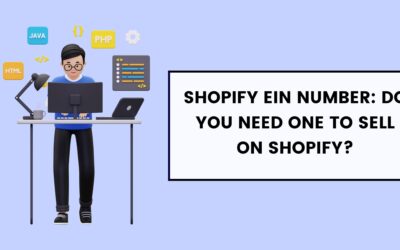Content Marketing for Ecommerce Business: A Beginner’s Guide
Ecommerce businesses that focus on content marketing see significant improvements in online visibility, customer engagement, and conversion rates.
This is because a well-planned content marketing strategy helps establish brand authority, fosters trust and loyalty with customers, and increases purchase conversions.
There are many ways to optimize content for ecommerce success.
For instance, creating valuable content types like white papers and how-to guides can be effective.
Leveraging user-generated content and SEO can also drive results. By understanding content marketing, you can elevate your brand and drive your business forward.
Benefits of Ecommerce Store Content Marketing
Content marketing is a game-changer for ecommerce stores. It boosts online visibility, strengthens brand reputation, and fosters deeper customer connections.
Online retailers can attract and keep a specific audience by producing top-notch, relevant content, driving growth and long-term success.
In the following sections, we’ll dive into the key perks of content marketing for ecommerce stores, including a surge in organic traffic, establishing brand authority, and building strong customer relationships.
1. Drives organic traffic to your site
By creating high-quality content that’s optimized for keywords, you can boost your online visibility and attract a steady stream of organic traffic to your site.
People who find your site through search engines are more likely to convert, since they’re actively looking for products or services like yours.
As you consistently create content, your search engine rankings will improve, and you’ll drive more organic traffic over time.
2. Builds brand awareness and authority
As your ecommerce store’s content marketing efforts start to pay off and you see more organic traffic, something cool happens: your brand becomes an authority in the industry.
This means people start to recognize and respect your brand’s expertise.
Your brand’s voice and tone become associated with quality and reliability, which helps build trust and loyalty with customers.
3. Boosts purchase conversions
Content marketing is key to driving revenue growth for ecommerce stores. It helps turn visitors into customers by providing valuable information, addressing pain points, and building trust. This, in turn, increases the chances of conversion by overcoming purchase hesitations.
Different types of content can boost purchase conversions:
- Product Reviews: 10% increase in conversions. Builds trust and credibility.
- Product Demos: 15% increase in conversions. Demonstrates product benefits.
- Customer Testimonials: 12% increase in conversions. Social proof and trust.
- Comparative Guides: 8% increase in conversions. Informs and educates customers.
4. Develops meaningful relationships with customers
Content marketing is a powerful tool that helps ecommerce stores develop meaningful relationships with customers.
By providing valuable, relevant, and consistent content, businesses can address the needs and interests of their audience.
This approach builds trust and loyalty, turning one-time buyers into repeat customers.
When ecommerce businesses understand their audience, they can create content that resonates with them.
This ultimately drives long-term growth and customer retention.
5. Increases customer lifetime value
By getting to know their customers better, ecommerce businesses can increase customer lifetime value.
They can do this by creating targeted content marketing strategies that encourage repeat purchases and loyalty.
This helps build long-term relationships, generates positive reviews, and sparks word-of-mouth referrals.
As a result, customers become loyal advocates, driving revenue growth and profitability for the ecommerce business.
6. Lowers cost of acquisition
Ecommerce businesses can save big on customer acquisition costs by using content marketing strategies that draw in and engage their target audience, driving conversions and revenue growth.
By creating valuable content, they can attract organic traffic, reducing their need for costly paid ads.
This leads to a lower cost per acquisition, freeing up resources for other important business activities.
Types of Content for Ecommerce Marketing
When you’re doing ecommerce marketing, you need to create the right type of content to grab customers’ attention and boost sales.
There are many types of content that ecommerce businesses can use to achieve their marketing goals.
You can create informative white papers, comparison articles, user-generated content, and product buying guides, among other options.
White Papers
In ecommerce marketing, white papers are a powerful tool for establishing thought leadership and generating leads, especially among business-to-business and high-consideration product buyers.
These reports provide valuable insights, research, and analysis, positioning your brand as an authority in the industry.
Comparison Articles for Ecommerce Products
When faced with a sea of product options, online shoppers often struggle to make sense of it all.
This is where comparison articles come in – a valuable resource that helps customers make informed purchasing decisions.
These articles provide a detailed breakdown of similar products, highlighting their key features, benefits, and drawbacks.
Guest Blogging
Partnering with influential bloggers can be a game-changer for ecommerce businesses. By doing so, they can tap into new audiences and build backlinks to their websites, which enhances their online visibility and credibility. Guest blogging is an effective way for businesses to share their expertise and showcase their brand voice, positioning themselves as thought leaders in their industry.
|
Benefits |
Tactics |
Goals |
|
Increased brand awareness |
Identify and partner with relevant bloggers |
Drive traffic to website |
|
Established thought leadership |
Create high-quality, engaging content |
Build high-quality backlinks |
|
Improved SEO |
Develop relationships with bloggers and influencers |
Increase conversions and sales |
|
Expanded audience reach |
Optimize guest posts for SEO |
Enhance online credibility and reputation |
|
Diversified content marketing |
Track and analyze the results of guest blogging efforts |
Strengthen online presence and authority |
How To / Product Buying Guides
Creating informative and engaging ‘how-to’ guides and product buying guides can significantly enhance the shopping experience for ecommerce customers.
These guides provide valuable insights and practical advice on product selection and usage, establishing the business as an authority in the industry.
User-Generated Content
One powerful way to build credibility and drive sales in ecommerce is through user-generated content. This type of content showcases customer experiences and opinions, which can take many forms.
There are several types of user-generated content, each with its own benefits.
For instance, customer reviews build trust and credibility by providing feedback on products.
Testimonials, which can be quotes or videos, increase conversions and sales by showcasing satisfied customers.
User-submitted photos with products create social proof and engagement.
Videos
Product videos have a significant influence on consumer purchasing decisions, with nearly 70% of them considering them important.
This makes video content a crucial part of a comprehensive ecommerce marketing strategy.
Videos can increase engagement and drive conversions by showcasing product features, demonstrating usage, and providing customer testimonials.
They can be easily embedded on product pages, social media, or YouTube, making them a versatile marketing tool.
Tips for Ecommerce Store Content Creation
When creating content for your ecommerce store, you need a solid foundation to achieve success.
You should establish clear goals and understand your target audience and competitors.
This helps you craft compelling content that resonates with your customers and drives business results.
Write Down Your Goals
Setting solid goals is crucial for your ecommerce store’s content marketing strategy. You need to define specific, measurable, achievable, relevant, and time-bound (SMART) goals that align with your business objectives.
This helps you focus on what you want to achieve and guides your content creation efforts.
Consider the following goals:
- Increase website traffic by 20% within the next 3 months.
- Boost sales by 15% within the next 6 months.
- Enhance customer engagement on social media by 30% within the next 2 months.
- Reduce bounce rate by 10% within the next 2 months.
- Improve average order value by 12% within the next 4 months.
Create Audience Personas
Creating accurate audience personas is crucial for ecommerce content creation.
It lets you tailor your content to resonate with your target audience, driving conversions.
Understanding their demographics, preferences, and pain points enables you to craft content that speaks directly to your ideal customer.
This increases engagement and loyalty.
Define your brand voice
Defining your brand voice is crucial for showcasing your ecommerce store’s unique personality and values through content. This voice should resonate with your target audience and set your brand apart from competitors.
To define your brand voice, consider these key elements:
- Tone: Are you formal or casual, serious or humorous?
- Language: Do you use simple or technical language, and is it concise or detailed?
- Values: What principles drive your brand’s messaging and content?
- Emotional tone: How do you want customers to feel when they interact with your brand?
- Unique phrases: Develop catchphrases or slogans that reflect your brand’s personality and values.
Research your competitors
Competition analysis is a key part of ecommerce content creation.
It helps you find gaps in the market and opportunities to set your brand’s messaging apart.
Take a closer look at your competitors’ content strategies.
Identify what they’re doing well, what they’re not doing so well, and what’s missing from their messaging.
This research will help you develop a unique value proposition and create content that resonates with your target audience.
Use the right tools
To create effective content for your ecommerce store, you need to use the right tools. These tools can streamline your content creation process, optimize your workflow, and ensure consistency across all platforms.
Some essential tools for ecommerce content creation include Grammarly for grammar and spell checks, Canva for graphic design and visual content, Hootsuite for social media scheduling, Ahrefs for SEO optimization, and Trello for project management.
Tell your brand’s unique story
Every successful ecommerce brand has a unique story that sets it apart from the competition and resonates with its target audience.
This story conveys the brand’s values, mission, and personality, making it relatable and memorable.
You can build a loyal customer base by sharing this story through compelling content, such as blog posts, videos, or social media.
Your brand’s story should be authentic and honest, revealing the people and passions behind the products.
It should also highlight what makes your brand unique and different from others in the industry.
Understand clear formatting
Making ecommerce content more scannable and engaging helps customers quickly find what they need and make informed purchasing decisions.
To get there, consider these formatting tips:
- Break up content with headings and subheadings.
- Use short paragraphs and concise sentences.
- Bullet points and numbered lists can help too.
- Don’t forget about white space for better readability.
- Clear and consistent typography is key.
Break up text with relevant visuals
Want to capture customers’ attention and drive sales? Incorporating relevant visuals into your ecommerce content is the way to go!
High-quality product images, infographics, and videos that show products in action can help convey complex information more efficiently. This breaks up the text and creates engaging content that resonates with customers, leading to increased conversions.
How can I leverage user-generated content for marketing in ecommerce?
Building trust with potential customers is crucial in ecommerce, and leveraging user-generated content is an effective way to do so.
This type of content showcases real customers’ experiences, which builds social proof and credibility.
- You can encourage customers to leave reviews and ratings, as this is a great way to get started.
- Sharing customer testimonials on social media is another effective strategy.
- Consider creating a customer showcase or hall of fame to highlight your satisfied customers.
- Running a user-generated content campaign on social media can also help increase engagement.
What is a content strategy in Ecommerce?
In ecommerce, a content strategy is a plan for creating and sharing valuable, relevant, and consistent content to attract and keep a specific audience.
This plan outlines what you want to achieve with your content, who your target audience is, and how you’ll distribute your content.
What is the role of SEO in content marketing for Ecommerce?
Search Engine Optimization (SEO) is crucial in ecommerce content marketing. It helps increase online visibility, drive organic traffic, and ultimately, boost conversions and sales.
With SEO, you can enjoy several benefits. For instance, your website can rank higher in search engines. This leads to increased credibility and trust among customers.
You’ll also get targeted traffic, which results in higher conversion rates. Plus, SEO is a cost-effective marketing strategy that can lead to long-term sustainability and growth.
Can I use AI tools for writing ecommerce content?
When ecommerce businesses need to produce high-quality content on a large scale, they often wonder if AI tools can help with writing ecommerce content.
The upside is that AI-generated content can save time and resources.
However, ensuring the output meets the brand’s standards and resonates with the target audience is crucial.
Is it allowed to copy content from competitors?
Copying content from competitors is a big no-no. Not only is it unethical, but it’s also illegal and can lead to serious consequences, including legal action and damage to your online reputation.
Instead, focus on creating unique and high-quality content that showcases your brand’s voice and perspective. Remember to respect your competitors’ intellectual property.
Conduct thorough research to create original content. Use plagiarism detection tools to ensure originality.
Develop a unique tone and style that resonates with your audience. Focus on providing value to your customers through authentic content.
Wrapping Up
Content marketing is a game-changer for ecommerce businesses. It helps build strong customer relationships, drives sales, and establishes a brand’s authority.
By grasping the benefits, types, and strategies of content marketing, ecommerce businesses can create content that truly speaks to their target audience.
A solid content strategy that incorporates user-generated content, SEO optimization, and AI-assisted writing tools can greatly contribute to ecommerce success.
5 Best Credit Cards for eCommerce: Score Big Savings and Get Rewards
5 Best Credit Cards for eCommerce: Score Big Savings and Get RewardsWhen you're running an...
Do I Need a Business License for Shopify?
Do I Need a Business License for Shopify?Do you need a business license to run a Shopify store? ...
Shopify EIN Number: Do You Need One to Sell on Shopify?
Shopify EIN Number: Do You Need One to Sell on Shopify?An Employer Identification Number (EIN) is...






